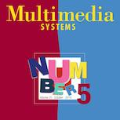We introduce Multi-Source 3D (MS3D), a new self-training pipeline for unsupervised domain adaptation in 3D object detection. Despite the remarkable accuracy of 3D detectors, they often overfit to specific domain biases, leading to suboptimal performance in various sensor setups and environments. Existing methods typically focus on adapting a single detector to the target domain, overlooking the fact that different detectors possess distinct expertise on different unseen domains. MS3D leverages this by combining different pre-trained detectors from multiple source domains and incorporating temporal information to produce high-quality pseudo-labels for fine-tuning. Our proposed Kernel-Density Estimation (KDE) Box Fusion method fuses box proposals from multiple domains to obtain pseudo-labels that surpass the performance of the best source domain detectors. MS3D exhibits greater robustness to domain shifts and produces accurate pseudo-labels over greater distances, making it well-suited for high-to-low beam domain adaptation and vice versa. Our method achieved state-of-the-art performance on all evaluated datasets, and we demonstrate that the choice of pre-trained source detectors has minimal impact on the self-training result, making MS3D suitable for real-world applications.
翻译:我们引入了一种名为多源三维(MS3D)的新的自训练流程,用于三维目标检测中的无监督域自适应。尽管三维检测器具有显著的准确性,但它们经常会过度拟合于特定的域偏差,从而在各种传感器设置和环境中导致次优的性能。现有方法通常专注于将单个检测器适应到目标域,忽略了不同的检测器在不同的未见域上具有不同的专业知识的事实。MS3D利用这一点,通过合并来自多个源域的不同预训练检测器,并加入时间信息来产生高质量的伪标签进行微调。我们提出的核密度估计(KDE)框融合方法融合来自多个域的框提议来获取优于最佳源域检测器的伪标签。MS3D对域移位的鲁棒性更强,并且在更大的距离上产生准确的伪标签,使其非常适合高到低光束域自适应和反之亦然。我们的方法在所有评估数据集上均达到了最先进的性能,并且我们证明了预先训练源检测器的选择对自我训练结果没有太大影响,从而使MS3D适用于实际应用。

